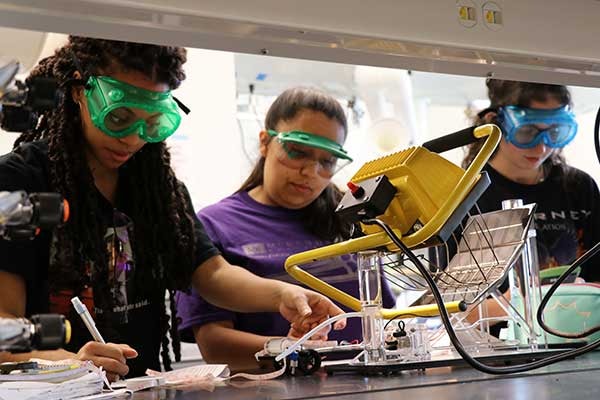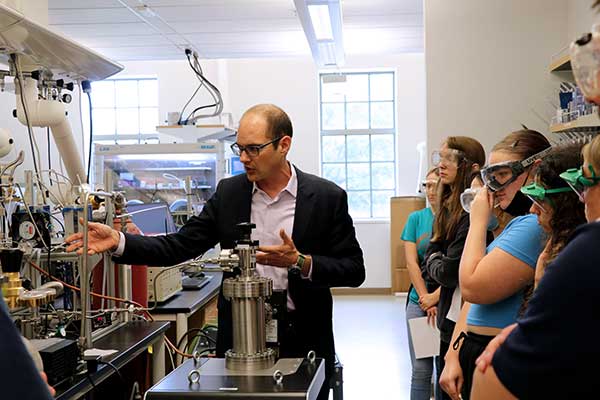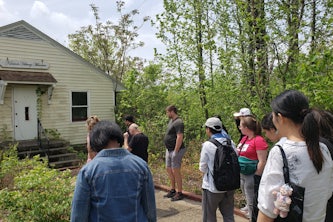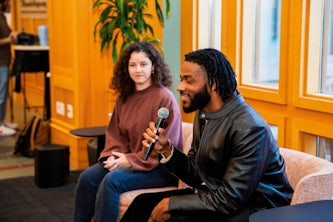NSF outreach effort promotes thermodynamics education
Elijah Thimsen and educators from area school districts work together to make chemistry concepts more accessible to high school students

For high school students, the science behind thermodynamics can be hard to grasp.
"Thermodynamics is typically a concept that students struggle with because it’s hard for them to ‘see’ things on a molecular level,” said Elisabeth Knierim, a high school chemistry teacher at Belleville West High School. “We can use thermometers or monitor if something melts, but in general, it's a difficult concept for students to understand.”
That’s why Knierim teamed up with Elijah Thimsen, associate professor of energy, environmental & chemical engineering, to develop a program to make the concept easier to understand. The program was funded by Thimsen’s Faculty Early Career Development (CAREER) Award from the National Science Foundation, and in May, the McKelvey School of Engineering hosted 22 students from Clayton and St. Charles, Missouri, and Belleville, Illinois, for a daylong, hands-on lesson on thermodynamics. They toured faculty labs in the Department of Energy, Environmental & Chemical Engineering and took part in an activity where they used photovoltaic panels to produce hydrogen that powered toy cars.
“We demonstrated the production of hydrogen using a plasma reactor and exposed them to techniques we use on a regular basis, such as mass spectrometry,” Thimsen said. “It's fun because the students learn about mass spectroscopy in their AP chemistry course, but it's the type of instrumentation that's beyond the reach of a typical high school.”
The trip to campus was a culmination of two years of study for Knierim’s students, and she said it was satisfying to watch them connect what they studied in the classroom to what they observed in the lab.
“This experience was a great way for students to see what they learned and how it applied to a greater concept like Dr. Thimsen’s research,” Knierim said. "It gave what they learned a greater purpose, and they were excited to see their knowledge in application.”

Originally, Thimsen and Knierim’s team had planned to host a workshop to share best practices with other educators, but they realized they could make a bigger impact by teaching the students directly on the Washington University in St. Louis campus.
"One of the best benefits of the students coming to campus was that they could then see themselves there,” Knierim said. “The opportunity they had to talk with Dr. Thimsen and his doctoral students about why they went into chemical engineering opened their eyes to new possibilities.”
While the team doesn’t yet have set plans for next year’s program, Knierim said that they aim to continue offering the program to students and encouraging study of difficult chemistry concepts.
“Overall, we want to continue to get students interested in thermodynamic equilibrium and to study it,” she said. “Whatever that looks like or however that happens, that would be the long-term goal.”




